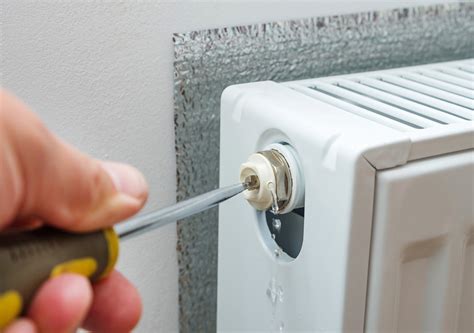Save Money on Repairs: Bleed Your Radiator Yourself
Car troubles can strike at the worst times, and often, the simplest issues lead to the biggest headaches (and the biggest bills!). One common problem, especially during colder months, is a radiator that needs bleeding. This seemingly small task can often lead to unnecessary trips to the mechanic, costing you valuable time and money. Learning how to bleed your radiator yourself is a simple yet powerful skill that can save you significant funds in the long run. This guide will walk you through the process, empowering you to tackle this repair with confidence.
What Does It Mean to Bleed a Radiator?
Before diving into the how-to, let's understand the why. Air trapped in your car's cooling system prevents coolant from circulating properly. This leads to overheating, reduced engine efficiency, and potential engine damage. Bleeding the radiator removes this trapped air, ensuring optimal coolant flow and preventing costly repairs down the line. Think of it like unclogging a pipe – you need to clear the blockage for the system to function correctly.
Why Should I Bleed My Radiator Myself?
Cost Savings: Mechanic labor rates can be substantial. Bleeding a radiator is a straightforward procedure that, once learned, can save you upwards of $50-$100 in labor charges alone.
Convenience: You're not at the mercy of a mechanic's schedule. You can bleed your radiator at your convenience, saving valuable time.
Empowerment: Learning basic car maintenance builds confidence and self-sufficiency. It's incredibly satisfying to tackle a repair yourself and successfully resolve a vehicle issue.
How to Tell if Your Radiator Needs Bleeding
Several symptoms indicate your radiator needs bleeding:
- Overheating: This is the most obvious sign. Your temperature gauge might climb into the red zone, or your engine might overheat and even stall.
- Weak or Inconsistent Heating: If your heater isn't blowing hot air consistently, or is only lukewarm, air in the system could be the culprit.
- Gurgling Sounds: Unusual gurgling or bubbling noises from the radiator or engine bay could signify air pockets.
- Coolant Leaks (In some cases): While not always directly related to air, a leak might be exacerbated by air pockets preventing proper coolant circulation.
What Tools Will I Need?
The good news is, you won't need a vast array of specialized tools. Most likely, you already have what you need:
- A coolant recovery bottle: This is usually a clear plastic container connected to your cooling system.
- A funnel: To add coolant safely.
- Gloves: To protect your hands from the coolant.
- Safety glasses: Always protect your eyes!
- Clean rags or towels: For spills and cleanup.
- Your car's owner's manual: This will provide specific instructions for your vehicle's cooling system.
Step-by-Step Guide to Bleeding Your Radiator
Caution: Coolant is toxic. Always work in a well-ventilated area and wear gloves and safety glasses.
- Locate the Bleeder Valve: Your car's manual will show you the exact location of the bleeder valve. It's usually located on the top of the radiator or a higher point in the cooling system.
- Check the Coolant Level: Ensure your coolant is at the correct level. Consult your owner's manual for the appropriate level.
- Start the Engine: Let it run until it reaches operating temperature.
- Open the Bleeder Valve: Use a suitable wrench or screwdriver (depending on the valve type) to carefully open the bleeder valve.
- Observe the Coolant Flow: Coolant should begin to flow out of the valve. If it’s mostly air, you'll need to keep the valve open while monitoring the coolant flow for a while. Close the valve once a steady stream of coolant emerges without any air bubbles.
- Check the Coolant Level Again: Top off the coolant as needed.
- Inspect for Leaks: Once finished, carefully check for any leaks around the bleeder valve or other parts of the cooling system.
- Test Drive: Take your car for a short test drive to ensure the engine temperature remains stable.
What if I can’t find the bleeder valve?
Some vehicles don't have a traditional bleeder valve. In these cases, the process might involve squeezing the upper radiator hose to force out trapped air, or running the engine with the radiator cap slightly loose (refer to your owner's manual for this method).
What type of coolant should I use?
Use the type of coolant recommended by your vehicle's manufacturer. Mixing different types of coolant can be harmful to your engine.
How often should I bleed my radiator?
Regular bleeding isn't typically necessary unless you're experiencing the symptoms mentioned earlier.
What if I still have problems after bleeding the radiator?
If you've followed these steps and are still experiencing overheating or other issues, there might be a more serious problem with your cooling system. It's best to consult a qualified mechanic in this situation.
By learning how to bleed your radiator yourself, you’re not just saving money—you’re taking control of your car's maintenance and gaining valuable mechanical skills. This simple procedure can prevent significant future expenses and empower you to keep your vehicle running smoothly. Remember to always consult your car's owner's manual for specific instructions and safety precautions.

